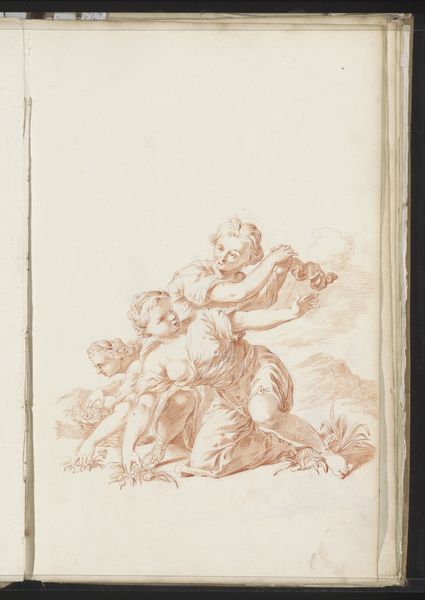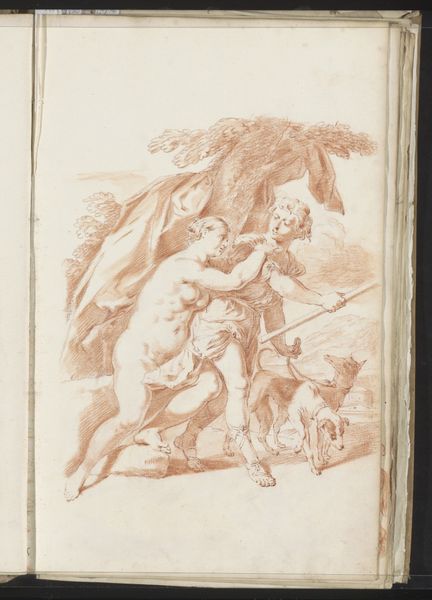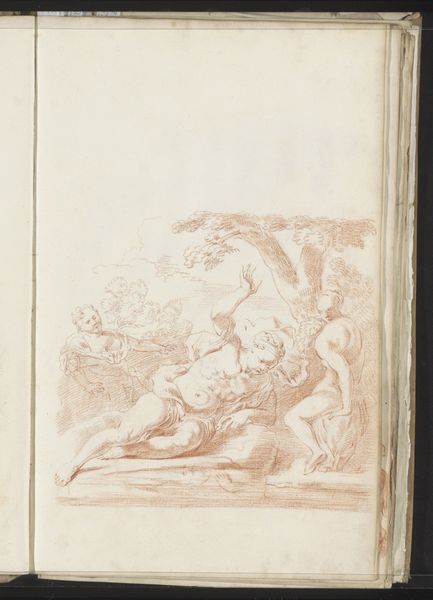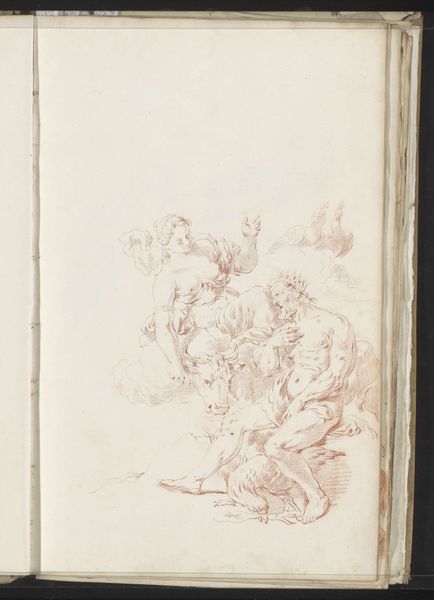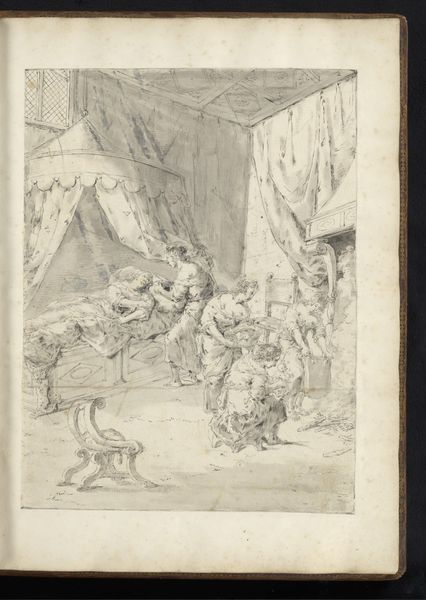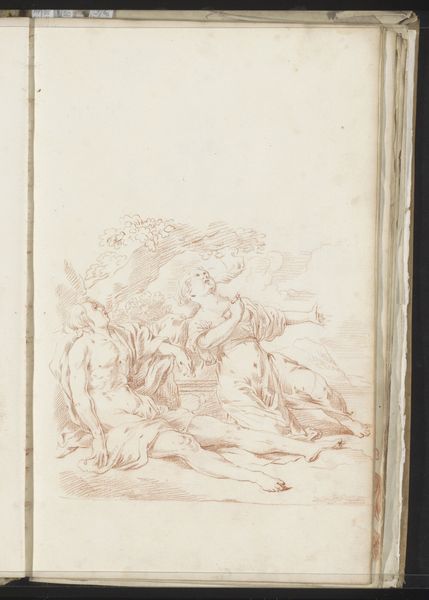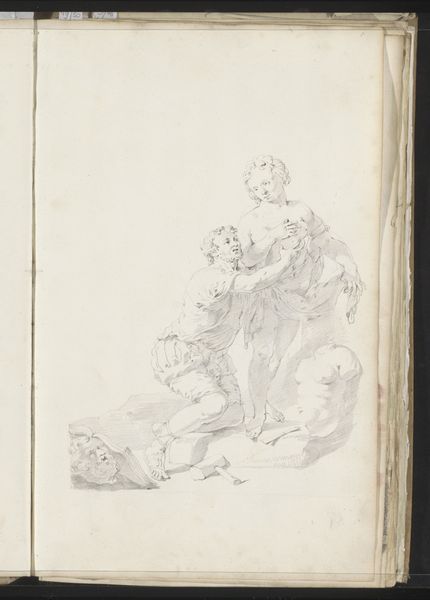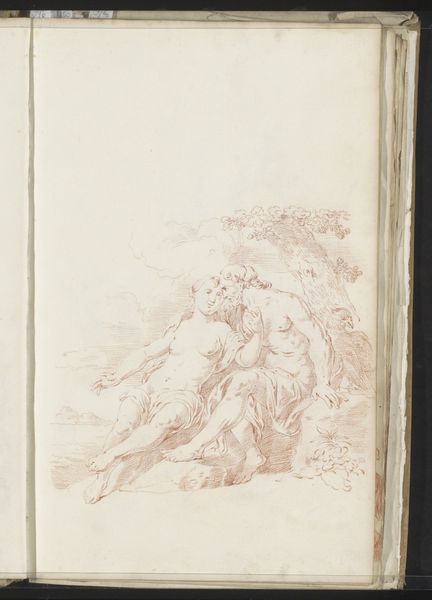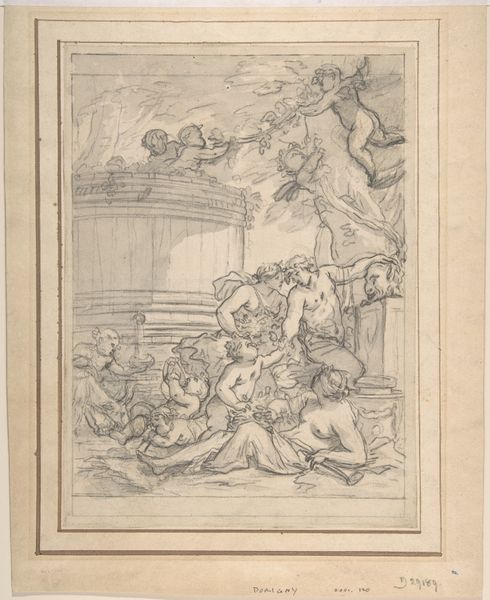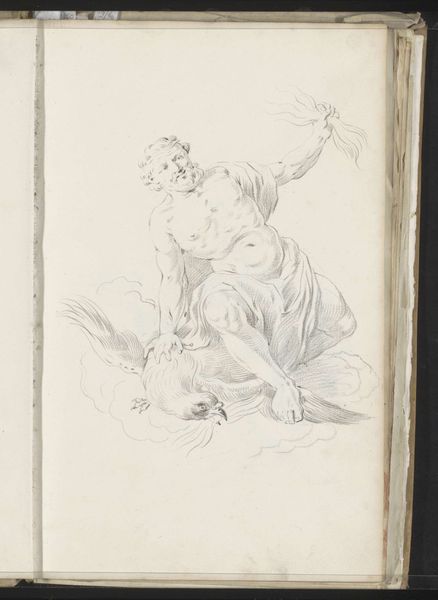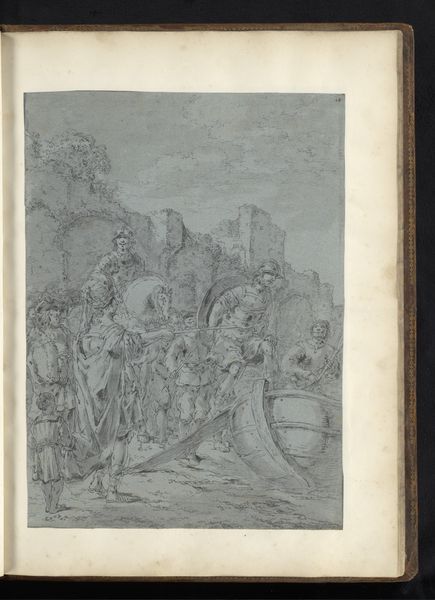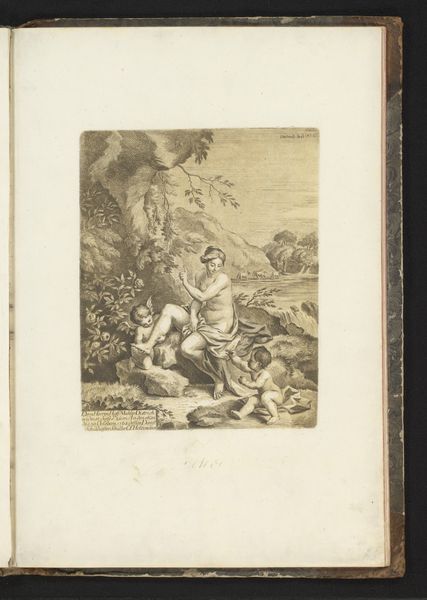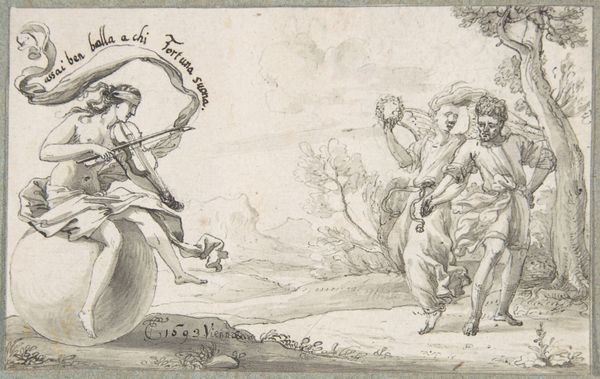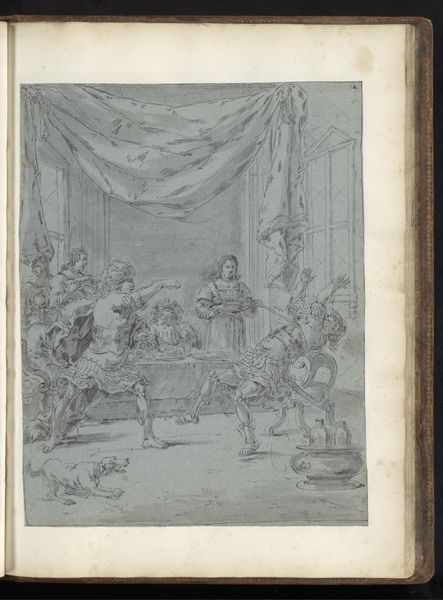
drawing, paper, ink
#
drawing
#
toned paper
#
quirky sketch
#
narrative-art
#
baroque
#
pen sketch
#
sketch book
#
figuration
#
paper
#
personal sketchbook
#
ink
#
ink drawing experimentation
#
pen-ink sketch
#
pen work
#
sketchbook drawing
#
history-painting
#
sketchbook art
Copyright: Rijks Museum: Open Domain
This drawing by Jacob Toorenvliet depicts the enchantress Circe transforming Odysseus’s men into swine. It's an illustration of a key episode from Homer's Odyssey, likely made in the Netherlands. Toorenvliet's image makes meaning through several visual cues. Circe is seated, in command, while Odysseus's men kneel before her, their human forms distorted into those of pigs. The classical architecture in the background and the elegant urns scattered around Circe suggest wealth and power. Classical literature was a central reference point for European artists and their patrons. The Dutch Republic, where Toorenvliet was working, was deeply engaged in the rediscovery of the ancient world. Artists often turned to classical myths for moral lessons, and to affirm the cultural authority of the elite classes, who had the means to collect antiquities and display art in their homes. The story of Circe and Odysseus's men can be seen as a cautionary tale about the dangers of succumbing to base desires. The careful historian can use this to better understand the moral codes of the 17th century Dutch Republic.
Comments
No comments
Be the first to comment and join the conversation on the ultimate creative platform.
